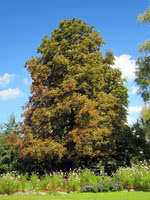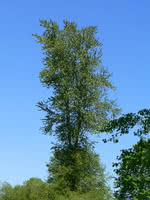Mon-Fri 9am - 5pm Mountain time
Horse Chestnut vs Black Cottonwood
Aesculus hippocastanum
Populus trichocarpa
CUSTOM GROW
Horse Chestnut is a medium sized deciduous tree that is native to Greece but has been grown in North America for hundreds of years. It produces large nuts.
A top CO2 absorbing species. Experts think this tree may help climate change more than others.
Black Cottonwood is the largest and tallest of the North American poplars. Named after its white, fluffy seeds with cottony hairs, this hardy tree produces sticky, fragrant buds and has a straight growth habit. Black Cottonwood needs ample moisture and nutrients to grow successfully to full height and are found in the Western provinces and the Yukon with BC being its heartland.
Horse Chestnut Quick Facts
Black Cottonwood Quick Facts
Toxicity: most parts of plant are toxic

